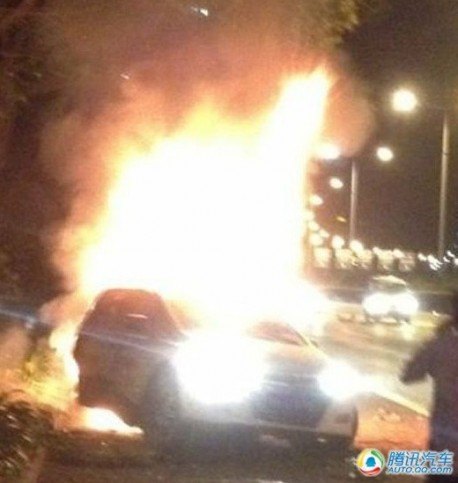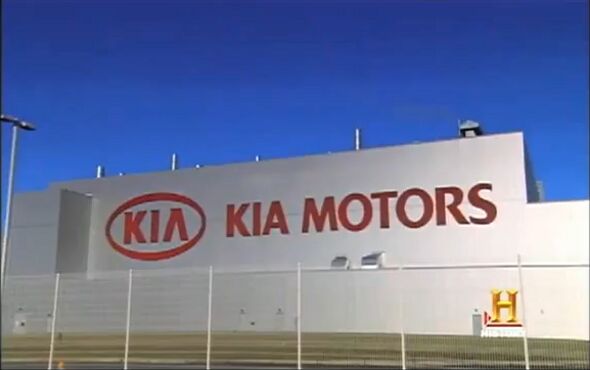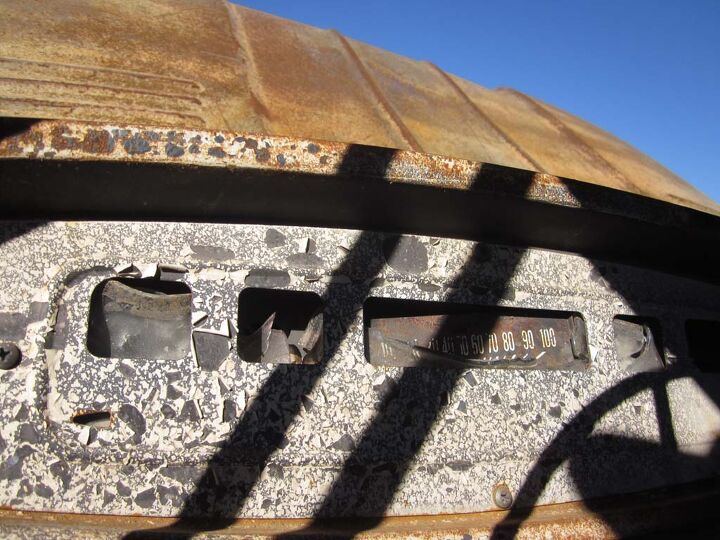#Fire
Fisker: Overheating Cooling Fan Resposible For Fire
Fisker concluded its investigation into the fire that consumed one of their Karmas in Woodside, CA. According to a Fisker statement, neither the Lithium-ion battery pack, nor “new technology components, engine component packaging or unique exhaust routing of the Fisker Karma” were responsible for the conflagration. Rather, it was a lowly cooling fan, that, well, overheated. In the guessing game for the fire’s cause, TTAC’s independent accident investigator Ronnie Schreiber came closest when he suspected a low voltage unit.
A recall of approximately 2,400 Fisker Karma has been initiated.
Fisker Says Latest Fire Not Caused By Battery, Engine or Exhaust – Which Leaves …
After reports of a Fisker Karma going up in flames in Woodside, California last Friday, we published comments that EV expert Jon Bereisa had made about an earlier Karma fire. Bereisa had said that the tight packaging of the engine and putting the entire exhaust system under the hood and exiting out behind the front wheels compromised the heat shielding. Putting that together with photos and video of the latest fire, that showed the firefighters concentrating their water spray behind the front wheel, I speculated that Bereisa’s criticism was warranted. Now Fisker has issued a statement, specifically absolving the engine compartment and “unique exhaust routing” of involvement in the Woodside fire:
Fisker Douses The Flames
Fisker responded quickly to the fire that left a Fisker Karma a clump of smoldering sheet metal last Friday. Fisker issued a statement saying that Fisker engineers, working with independent investigators from Pacific Rim Investigative Group, have started examining the Karma. What they found so far does not support speculation put forth on major car blogs:
Second Fisker Karma Burns – Did EV1/Volt Engineer Predict Cause?
Fisker Karma Fire, Woodside, CA – Photo Courtesy of Aaron Wood
A second Fisker Karma has been reported by Jalopnik to have caught fire and burned yesterday. The owner returned with his groceries to find the car in flames in a Woodside, California parking lot. Interestingly, he first called Fisker who advised him, wisely, to call 911. Back in May, after a Karma started a house fire in Texas, engineer John Bereisa said that the proximate cause of that fire was likely heat, the result of tight engine packaging. The ultimate cause, he suggested, was the hybrid vehicle’s weight, which Bereisa said necessitated a larger, more powerful combustion engine to power the car’s generator that charges the batteries for extended range use. Bereisa is one of the world’s experts on building electric and hybrid cars.
Burning BYD EV Gets Frosty Reception
Pictures of a burning BYD e6 sent the already beaten down BYD stock on a nose-dive yesterday. The e6 is one of the rare BYD electric cars, used in a taxi test in the Chinese city of Shenzhen. A Nissan GT-R had crashed into two taxis, one a conventional Santana, the other an electric e6. The e6 immediately did burst into flames. Two female passengers and the driver were killed.
Junkyard Find: Oh, Those Clever Tow Truck Drivers!
Every once in a while, you see funny things written on junked cars, presumably by waggish junkyard employees. There was the Bee Careful Cressida, for example. On a recent trip to a Colorado self-serve yard, I spotted this very charred pickup with some more examples of the Funny Junkyard Guy genre.
Kia Gets Flamed, Closes Factory
Hyundai’s sister company Kia might want to use some of those hypnotic powers to get badly needed parts. Kia’s U.S. plant in Georgia has been shut down, following a fire at parts supplier Daehan Solution. The West Point, GA, factory makes the Optima sedan, the Sorento SUV, and Hyundai’s Santa Fe SUV.
86 Non Chevy Volts Burn After Improper Recall Service, Prompting Second Recall of 296,920 Non Chevy Volts
GM Considers Volt Battery Redesign, Halts European Deliveries, Will Miss US Sales Goal, Recall Or Buyback Possible
In the comments section of yesterday’s post on the ongoing Chevy Volt fire investigation, I noted that GM might
retrofit Volts with crash protection that can maintain battery integrity in all crash conditions… Mary Barra has said that GM is
“continuing to work with NHTSA to investigate additional actions to reduce or eliminate the potential of a post-crash electrical fire.”
I think some kind of update on the battery integrity front is inevitable, but we shall see…
Sure enough, today Reuters is running an interview with GM CEO Dan Akerson, who says that European deliveries of Opel-branded Volts (called Ampera) would be delayed pending NHTSA’s investigation, and that maybe, just possibly, the Volt’s battery might have to be redesigned. Says Akerson:
We want to assure the safety of our customers, of our buyers, and so we’re just going to take a time out, if you will, in terms of redesigning the battery possibly
Unfortunately, Akerson’s mangled syntax makes it tough to know if GM is really going to redesign the Volt’s battery, or what the “time out” in question means. He does tell the AP [via The WSJ [sub]] that a recall or buyback are options as well. Though redesigning the Volt’s battery could be expensive and devastating for sales, GM’s current post-crash safety protocol is incredibly human resources-intensive, and likely very costly as well. And the fact that GM is even considering redesigning the Volt for safety a year after its release is going to create a huge sales and marketing challenge anyway. Volt production edged down by 199 units in November, and now GM’s sales boss Don Johnson tells the Detroit News that the Volt will miss its 10,000 unit 2011 sales goal. At this point, GM may just want to take a mulligan on the Volt’s first year, redesign the battery, and relaunch the thing.
This Is The Chevy Volt's Post-Crash Safety Protocol
TTAC has received the following protocol, developed by GM in the wake of the June Volt fire at a NHTSA facility in Wisconsin, from a GM source and has confirmed its legitimacy with a second GM source. Though the procedure may be refined based on the findings of NHTSA’s latest round of tests, it gives a good picture of what GM currently does to ensure the safety of Volt driver and passengers as well as rescue workers, towing company workers and salvage yards. And, I have to say, it puts some of my fears about this safety scare to rest. It hadn’t occurred to me that GM’s Onstar system could provide opportunities to respond to crashes in real-time, and apparently the system provides a wide variety of data with which GM’s “corporate SWAT team” can tailor its response to any Volt crash event. Hit the jump for the full procedure.
Volt And Consequences: GM Responds To NHTSA Volt Investigation
With NHTSA opening a formal defect investigation into the Chevy Volt, GM is moving to defend its rolling lightning rod (no pun intended) and allay consumer fears about its safety. Yesterday I briefly appeared on Fox Business’s Your World With Neil Cavuto show to talk about what the intro to my segment referred to as “the hybrid from hell” and the “killer in your garage.” I tried to explain that the danger to consumers was basically nil, and that the real concern is for rescue, towing and salvage workers. And I would have explained why NHTSA’s tests still leave some serious questions open, but my “fair and balanced” approach meant that my segment ended up being extremely short. So let’s take the opportunity now to look past the hysteria and pinpoint the real issues with NHTSA’s investigation into the Volt.
NHTSA Triggers "Thermal Events" In Volt Batteries, Opens Formal Investigation
NHTSA has has opened a formal defect investigation into the Chevrolet Volt, on the grounds that
Intrusion in a crash may damage the battery, which may result in a substantial thermal reaction and fire
We knew that NHTSA was already looking in to this type of defect after an earlier test incident, but the official investigation resume [ PDF] lists three separate thermal events that have occurred as a result of NHTSA tests. Hit the jump for the official explanation of this sequence of events.
Chart Of The Day: The Truth About Vehicle Fires Edition
I’ve suggested in these pages that the several documented fires involving Chevrolet Volts suggest some kind of pattern, as no other major-manufacturer EVs have been involved in any reported fires. But, as Ronnie Schreiber at Cars In Depth points out, even that pattern seems to pale in comparison to the National Fire Protection Association’s tally of highway vehicle fires in the US each year. Though the number of highway vehicle fires has decreased significantly since 1980, 2009 still saw 190,500 fires. And between 2003 and 2007,
On average, 31 highway vehicle fires were reported per hour. These fires killed one person a day.
Amazing Inventions: Fiat Produces Engine That Increases Ownership In Chrysler
Burned Dodge Truck Makes Us Sad
After the Fourmile Canyon Fire in September, charred vehicle carcasses began showing up in quantity in Denver wrecking yards. Completely burned-to-hell-and-gone vehicles don’t seem to offer any usable components for junkyard shoppers, but they still show up.
























Recent Comments